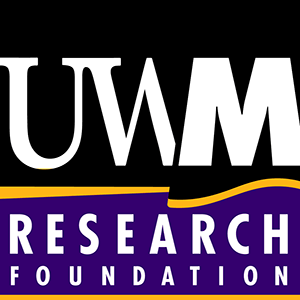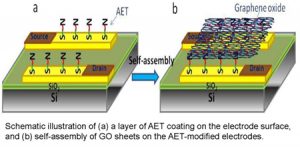
OTT#1225
Applications
Ultra-sensitive detection of E. coli cells for chemical sensors and biosensors.
Target Problems
E. coli 0157:H7 is highly virulent and is infectious with a very low dose such that 10 to 100 CFU can lead to infection. Methods for monitoring this pathogen in food production and water include a culturing and colony counting method, polymerase chain reaction, and immunological methods. These methods have low sensitivity, less specificity, and are time-consuming.
Key Features
- Faster – Rapid response for real-time monitoring of the environment
- Ultra-sensitive – Detection of E. coli concentrations as low as 10 CFU per mL
- Scalable – Fabrication can easily be scaled up with good reproducibility and high electrical stability
- Inexpensive – Materials utilized are relatively inexpensive
- In-situ Detection – Sensors can be placed directly in a water system for immediate detection
Technology
The inventor has utilized self-assembly of thermally-reduced monolayer graphene oxide (TRMGO) nanosheets on photolithographically patterned gold electrodes for highly sensitive detection of E. coli 0157:H7. This fabrication method by a solution process is suitable for mass-production of GO field effect transistor (FET) sensors. The TRMGO FET device shows great electronic stability and high sensitivity to E. coli cells with a concentration as low as 10 CFU per milliliter. The inventors have shown that this immunosensor has high sensitivity with a short response time as well as high reproducibility.
Intellectual Property
8,268,405 Controlled Decoration of Carbon Nanotubes with Aerosol Nanoparticles
8,240,190 Ambient Temperature Gas Sensor
US9676621B2 Graphene-Based Field-Effect Transistor Biosensors
The UWM Research Foundation has licensed the above patents to NanoAffix Science, LLC (http://www.nanoaffix.com/) and together the parties are working find additional partners to develop the technology into a final product.
Inventor (s)
Publications
Chang, et al., Ultrasonic-assisted self-assembly of monolayer graphene oxide for rapid detection of Escherichia coli bacteria, Nanoscale, Issue 9, 2013
Mao, et al., “Specific Protein Detection using Thermally Reduced Graphene Oxide Sheet Decorated with Gold Nanoparticle-antibody Conjugates, Advanced Materials, Vol.22, Issue32, August 24, 2010, pp. 3521-3526

